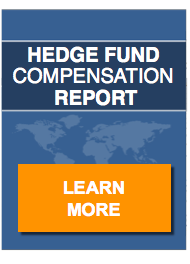So you are starting a hedge fund. You’ve just thought up a cool fund name, filed your LLC paperwork, asked your rich uncle for some seed money and had business cards printed up saying you’re the president and chief investment officer of your very own hedge fund. Congratulations.
But you’ll probably be back on Merrill’s trading desk in a matter of months.
Stick with What You Know
If you’re starting a hedge fund, the figures are sobering. For every big-hound hedge fund that get put down by the dog catchers, there are dozens of small puppies that simply go paws-up. According to a May 2010 Barron’s article, the Great Recession saw the failure of 2,000 funds, or almost one in every five that were in existence just a year and a half before. For all we know, though, it wasn’t much different in flush times. And the actual figures could be much higher. There are simply no reporting requirements in the United States so, until the relevant Dodd-Frank provisions kick in, we won’t know the true failure rate.
“We see a lot of short-lived funds, and by that I mean three months,” says Douglas Carpenter, partner for the past 11 years in hedge fund advisor and administrator, Strategic Asset Management. “The overwhelming majority of our clients are no longer in business.”
Strategy in Broad Strokes
Carpenter puts the average life span at two years. But if we don’t know how many hedge funds actually died in the past two years, then we can’t know what killed them all. Operational screw-ups? Under-capitalization? Both have certainly claimed their share of victims. But if you’re starting a hedge fund today, it might not live long enough to face those threats unless you establish — and can articulate — a unique strategy.
The European Central Bank identifies three basic categories of strategy:
- Directional, which anticipates market movements,
- Market-neutral, which takes advantage of arbitrage opportunities, and
- Event-driven, which follow companies through mergers, acquisitions, bankruptcies and other special situations.
Determining which strategy is right for you has nothing to do with what the market has been doing for the past three months or is likely to do over the next three. It has to do with you: What do you know best and what is your track record?
Maybe it’s fixed income. Maybe it’s commercial real estate. Carpenter has a client who “doesn’t know Thing One about stocks” but makes a good living in factoring accounts receiveable.
But odds are, you do know a Thing or Two about stocks — and probably more about stocks than you do about anything else. You’re probably destined to be a directional player. Within that space, the European Central Bank identifies several flavors:
Global Macro. Which requires a keen economic sense of international trade, exchange rate and interest rate balances;
Managed Futures. Which requires more quant skills and familiarity with derivatives than most non-Commodity Trading Advisors have;
Emerging Markets. Which requires a thorough knowledge of the business, legal and cultural environments of at least one country that people with enough money to invest in hedge funds do their best to avoid visiting;
Short Bias. Which requires a degree of pessimism so profound that you should probably consider medication if you’re seriously thinking of this; and
Long/Short Equity. The default.
The Long and the Short of It
If you have the same background as just about everyone who wants to know how to start a hedge fund, you’re about to open a long/short shop. Get in line.
The trick is to distinguish yourself from every other equity trader or analyst with a rich uncle and delusions of grandeur. If you’re expert in a region or sector or industry, that helps tremendously.
There’s nothing wrong with being a long/short player, of course. Many are very successful.
“What differentiates a hedge fund is when you have a month where the market is down eight or nine percent but you can provide a return of one to two percent,” says Boston-based Thomas M. Atwood, who left Wellington Management two years ago to establish Pentucket Capital Management.
Atwood’s advice to anyone looking to refine their hedge fund strategy is to follow where your clients lead. Pentucket started out with a diversified long/short fund but has recently added a more concentrated offering because that’s what the market demanded.
“We had clients willing to take on additional expected alpha, additional volitility,” Atwood says, noting that this market orientation also drives his funds’ long bias.
Over the long run, of course, the only way to really separate yourself from the long/short equity crowd is to outperform, and then to market effectively.
“It comes down to relationships,” Carpenter says. “A lot of people start with friends and family, where there’s an expectation of getting a check every time you have a meeting. But once you’ve ramped up and are dealing with serious buy-side players, “You know you’ve had a successful meeting not just if there’s a check, but if they want to see more from you.”
If you’re still around two years later when they’re ready to cut that check, it means you’ve got a good strategy.


